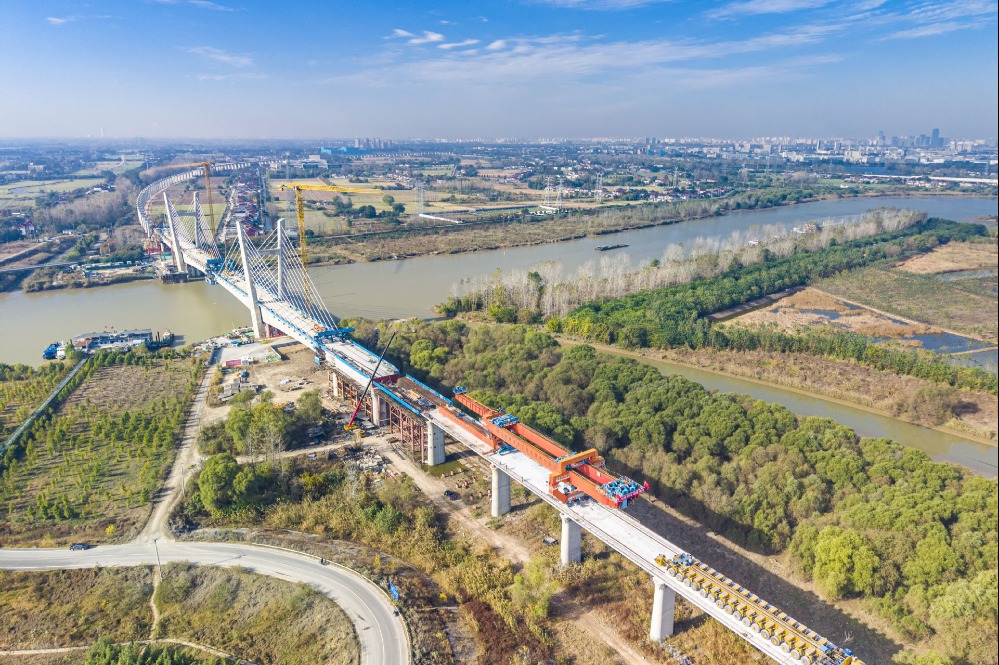Key technology to boost China's digital drive


The digital economy is developing at an unprecedented speed, having a wide range of impacts. It is becoming a key force in reshaping the global economic structure and changing the global competitive landscape. It has also become an important engine and a new growth point driving China's economy.
The recent annual meeting of the Boao Forum for Asia, held in Hainan province, and the International Finance Forum in Beijing revealed the importance of promoting the sustainable and healthy development of the digital economy and drew a picture of the future of China's digital economy that is entering a new stage of development.
The COVID-19 pandemic is changing the global economic order. According to the World Bank, 93 percent of the world's economies experienced a major recession in 2020. However, against this backdrop, the digital economy is showing strong resilience. In recent years, China has become a global leader in the development of the digital economy at scale. In 2020, China's digital economy was worth 39.2 trillion yuan ($5.9 trillion), the second largest in the world. Compared with 2005, the size of China's digital economy has doubled 15 times in 15 years, an impressive growth rate.
China's digital industry is growing at a rapid pace. In the past several years, China's global innovation index ranking has increased significantly, and the revenue of the software and information technology service industry has grown from 4.28 trillion yuan in 2015 to 8.16 trillion yuan in 2020, with an average annual growth rate of 13.8 percent-much higher than the average annual GDP growth rate.
In terms of digital infrastructure, China has built the world's largest fiber optic network, driven by the Broadband China strategy and other major policies. By the first quarter of 2022, China had opened about 1.6 million 5G base stations, accounting for more than 60 percent of the world's total, and the number of 5G terminal users reached 403 million.
In terms of the digital consumer market, China's huge internet user base has established a market advantage. In December, the number of internet users in China reached about 1.03 billion, and China was the world's largest electronic retailing market for the ninth consecutive year.
China's digital economy is characterized by having infrastructure as the core, computer technology as the base and deep integration with various industries. China has been vigorously developing its digital economy infrastructure, and in 2018 proposed the concept of "new infrastructure "to ensure the sustainable development of the digital economy.
In February, the nation's "east data, west computing" project was launched. This is a national-level industrial plan for data centers, with national guidance driving the rational allocation of resources across regions. In addition, the digital economy covers most socioeconomic industries, including agriculture, industry, and the service sector, as well as government, reflecting the comprehensive integration of the digital economy into the socioeconomic fabric of the country.
China's digital economy employs computer information technology to produce valuable data with the help of information technology such as databases, information software and algorithms, and uses data as a production factor that is embedded more and more deeply into the production distribution process of various industries and fields.
For a long time, databases have been monopolized by overseas giants, and the technical barriers are deep, but domestic enterprises are gradually increasing their market share after years of technology development and accumulation of experience. For example, the Huawei GaussDB database, whose performance has reached the top level, and its FusionInsight big data platform are applied in more than 60 countries and regions, serving more than 3,000 government and enterprise customers, with more than 800 business partners. They are widely used by governments, as well as the manufacturing, transportation and other sectors.
China has a large digital economy, but there is much work to do. For instance, the digital economy's share of GDP is much lower than that of several developed countries, such as Germany, the United States and the United Kingdom.
In 2020, China's digital economy accounted for only 38.6 percent of its GDP, while Germany's digital economy accounted for 66.7 percent of its GDP, followed by the US at 66 percent. The reason for this is that China is mainly developing those industries at the application level and relying on scale, rather than technology, as its main development force. China still needs to master key technologies to make its digital economy sustainable. At present, China is still constrained by the US and other developed countries in the most critical technologies, such as semiconductors and operating systems, and this constraint is more obvious in the Sino-US technology competition.
China's economy is now at a critical stage of transformation of its development mode and dynamics. The fourth industrial revolution, driven by artificial intelligence, blockchain, cloud computing, big data, the internet of things and other underlying digital technologies, with the flourishing of digital economy as the main content, provides an important opportunity for China's economy to step up.
The importance and strategic value of the digital economy has become more prominent amid the COVID-19 pandemic, and the competition between China, the US and Europe in the digital economy is intense. China needs to adhere to independent and open innovation and conquer core technologies to remain competitive.
Finally, China needs to establish more proactive industrial and innovation policies that support knowledge-intensive activities and improve the regulatory system with data elements as the core, so that the market can develop in a more standardized and healthier way.
The author is former minister of tourism of Brazil and a professor of public policy at the School of Public Policy and Management at Tsinghua University.































